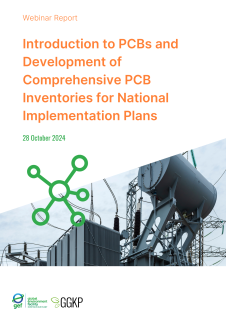
This report summarises the webinar on the Introduction to PCBs and Development of Comprehensive PCB Inventories for National Implementation Plans. The session provided a comprehensive overview of polychlorinated biphenyls (PCBs), their toxicity, and environmental impact. It outlined key steps for developing PCB inventories, including identification, tracking, and record management. Practical considerations for handling PCB-containing equipment, safe packaging, transportation, and interim storage were also covered. The webinar highlighted disposal technologies, such as plasma arc systems, in line with Stockholm Convention guidelines. It emphasised global efforts to phase out PCBs by 2025, ensuring regulatory compliance and promoting initiatives to minimize and ultimately eliminate PCB pollution through safe disposal technologies.
Target audience
- Stockholm Convention Official Contact Points and National Focal Points, particularly from project countries
- National officials and experts involved in the process of reviewing and updating the NIPs
- National officials and experts involved in hazardous chemicals and waste management
- Members of NIP National Coordinating Mechanism/Committees and Project Coordination Units/Thematic Task Groups
- Representatives of regional centres
- Other stakeholders
As part of the GEF-funded and UNEP-led “Global Development, Review and Update of NIPs under the Stockholm Convention on POPs” project, the Green Growth Knowledge Partnership (GGKP) is executing Component 4, focused on disseminating information, managing knowledge and coordinating with the Stockholm Convention Secretariat to provide accessible, integrated tools and resources for all Parties.
